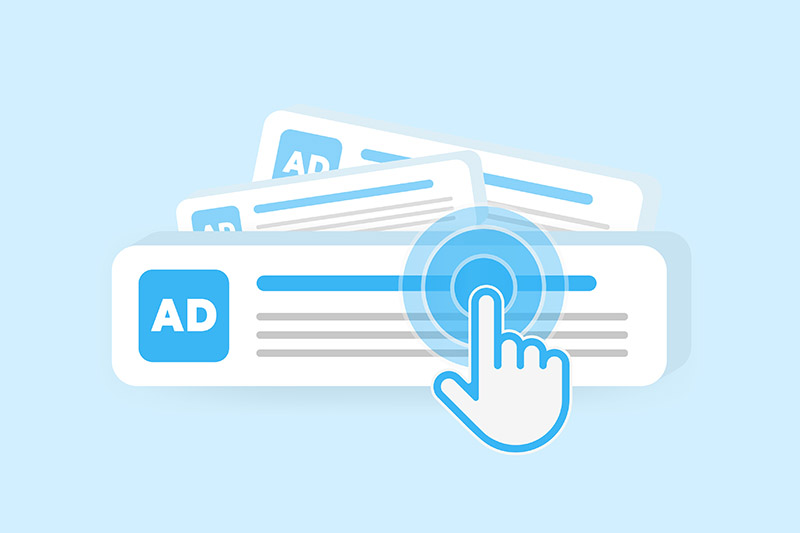Best Practices for Optimizing Google Ads & Maintaining Ad Grants Status
by Andrea Zuehlk
You made it through the Google Ad Grants application process, and your organization has been approved? Nice work! Your nonprofit now has FREE access to Google Ads and up to $10,000 per month of text-based, pay-per-click (PPC) advertising to encourage donations, recruit volunteers, publicize events and more.
Now comes the challenging part: creating campaigns that meet your advertising goals while maintaining your Ad Grants status. Here, we offer best practices and compliance guidelines for every step in the process. But before we dive in, let’s review how Google Ads works.
What is Pay-Per-Click Advertising?
Google Ads uses a pay-per-click model where advertisers pay each time a user clicks on one of their ads in Google Search. The business or organization doesn’t get charged when its ad simply appears in Google Search, only when the viewer clicks on the ad. Instead of paying a set fee for an ad placement, advertisers bid on search terms or keywords they want to trigger their ads to appear, setting a maximum cost-per-click (CPC).
When a user enters a search query in Google Search – donation to Detroit homeless shelter, for example – Google performs an automated ad auction, using complex algorithms to evaluate keyword bids, ad relevance and ad quality. This process determines which ads will appear, the order of those ads and their location on the search engine results page (SERP). Google wants to ensure high-quality results for each search query, so the ads that win the auction may not be those with the highest bid.
Google Ads can be a cost-effective way to drive traffic to your website, but it takes time and hard work to master. Here’s a look at some of the factors that can help you maximize your return on investment.
Jump to Section:
- Maintaining a Solid Account Structure
- Choosing Keywords Wisely
- Producing High-Quality Ads & Landing Pages
- Practicing the Right Bidding Strategy
- Tracking & Measuring Ad Performance
Maintaining a Solid Account Structure
Before you jump in, it’s important to understand the basics of account structure and how to maintain compliance with Ad Grants Guidelines.
Your Google Ads account features three main components: campaigns, ad groups and ads.
- Campaigns – A campaign represents a broad theme: volunteering or fundraising, for example. Each campaign must include at least 2 ad groups to maintain compliance.
- Ad Groups – An ad group contains ads that share similar targets. For your fundraising campaign, you might have ad groups representing “Winter Coat Drive,” “Summer Golf Outing” and “Holiday Donation Drive.” Each Ad Group must have at least 2 ads to maintain compliance.
- Ads – These are text-based ads that appear with a title, description and link to a website landing page. Ads should incorporate targeted keywords or phrases and can be enhanced with ad extensions – extra information in the ad that links to other website pages, a call button and more. To maintain compliance, you must include at least 2 ad extensions, or sitelink assets, in your account.
Overall, Google Ads constantly optimizes ad formats, algorithms and criteria, so weekly account monitoring is essential to ensure your ads have not been shut down due to non-compliance.
Choosing Keywords Wisely
Once you establish your ad campaign(s) and subsequent ad groups, it’s time to develop keywords – one list for each ad group that includes relevant phrases you will bid on to trigger the appearance of your ads in search.
Do your research! Think about users’ intent in relation to your goals and brainstorm phrases they might use for search queries. To build your list, you can type sample terms into Google Search and view Google Search Suggestions (these appear in a dropdown under the query box) and Google Related Searches (these appear at the bottom of the SERP). To refine your list, keyword tools such as Google Keyword Planner can help you research and select terms that are most likely to drive conversions cost effectively. You’ll typically end up with a list of 25 key phrases per ad group.
These additional tips will help you optimize your keyword lists:
- Avoid generic or single-word keywords to comply with Ad Grants guidelines.
- Focus on more specific long-tail keyword phrases.
- Build a list of negative keywords to avoid triggering ads for irrelevant search queries. For example, if your organization runs a soup kitchen, think about closely associated keywords that are not relevant to your organization like food pantry. If you do not provide food pantry access, food pantry would be a good phrase to include in your negative keyword list.
- Incorporate the time of year and location into key phrases when it makes sense, for example November Coat Drive in Detroit. Adjust or pause keywords that relate to specific seasons, holidays, etc. when they aren’t relevant.
Producing High-Quality Ads & Landing Pages
Google prioritizes ads based on relevance to the search query and quality of user experience. So once you have a strong list of keywords for each ad group, it’s important to incorporate these keywords into both your ads and your website landing pages for a seamless experience.
Tips for an Effective Google Ad:
- Keep it short and sweet – ad headlines are limited to 30 characters and descriptions are limited to 90 characters.
- Write clear, compelling headlines and descriptions that focus on user intent or goals.
- Be specific – include the where and when to keep the ad timely and targeted.
- Incorporate a clear call-to-action (CTA), for example Donate Today or Volunteer Now.
- Highlight unique aspects of your mission to differentiate your organization.
- Use ad extensions – additional rich content that takes the user to sitelinks, a phone number and other linked content – to enhance your ads with meaningful content.
- Use Google Ads’ targeting features to focus your ad spend on users that matter most. These include targeting users by specific location (geotargeting), time of day, device type or geographic radius.
- Conduct A/B testing, trying out different variations of the same ad to see which version is having the greatest impact.
A Strong Website Landing Page:
- Relates directly to the content of your ad.
- Features a clear, compelling headline, relevant content and a CTA that matches user intent.
- Renders at a fast-loading speed, which can be checked using Google PageSpeed Insights.
- Is optimized for mobile devices.
You can find additional guidelines for operating a high-quality website in the Ad Grants Website Policy.
Practicing the Right Bidding Strategy
In general, the more competitive the keyword, the higher the cost. If you have a higher bid on a keyword, your ad will likely gain more visibility and more clicks. So it’s important to set up a bidding strategy that fits your budget, bandwidth and advertising goals. Google Ads offers two ways to bid on keywords: manual bidding and automated bidding.
As its name suggests, manual bidding allows you to set the maximum amount you’ll pay for each ad click. It enables you to set a default bid for each ad group and set separate bids for individual keywords within the group. If you don’t have time to manage this process or you’re not sure about the value of your keywords, automated bidding may be the answer.
With automated bidding, Google Ads sets the bid limits for you, based on the likelihood an ad will generate a click or conversion. The strategy you choose for automated bidding depends on your ad goals:
- Maximize Clicks – helps you get the most clicks within your budget to increase website visitor traffic.
- Target Impression Share – helps you maximize ad placement prominence to increase visibility.
- Maximize Conversions – using Smart Bidding, this strategy helps you obtain more conversions (action that achieves the ultimate goal) within your budget. If you set parameters, such as Target Cost Per Action (CPA) or Target Return on Ad Spend (ROAS), Smart Bidding will maximize conversions to match those limits.
- Maximize Conversion Value – maximize the value of the conversion rather than the quantity of conversions.
To take advantage of the last two automated bidding methods, you need to set up Google Analytics, which allows you to track the actions that occur on your website. If you use a third-party donation payment processing partner, you will also need to have a Google Analytics tag or pixel placed on the third-party website pages.
Overall, the best way to get started with effective bid strategies is to do just that: start. Begin with the approach you find easiest to execute and build a baseline understanding of bidding, CPC, budget and results. From there, you can implement more complex bid strategies.
Tracking & Measuring Ad Performance
To track the performance of your ads and keywords, Google Ads provides statistics on clicks, impressions (ad visibility) and click-through rate (CTR). Google Ad Grants requires your account to maintain a 5% CTR each month – for example, if your ad appears in search results 100 times, users have clicked on the ad five times. Failing to meet a 5% CTR for 2 consecutive months can result in temporary account deactivation.
Google Ads also allows you to monitor your keyword quality scores, which depend on your click-through rate, ad relevance and the quality of the landing page experience. According to Google Ad Grants guidelines, your keywords must have a quality score of 3 or higher, so constant monitoring and adjustments are vital to maintaining a healthy account.
While it’s important to track keyword quality scores and the CTR for each ad, it’s also essential to know what actions users take on your website’s landing pages. Did they click the donate button, watch a video or fill out a form? To track these conversions, you’ll need to set up Google Analytics and link it to your Google Ads account. In Google Analytics, you can set up and track conversion goals and monitor bounce rates for your website landing pages to get the full picture on how your ads are performing.
Need help optimizing Google Ads and maintaining Ad Grants status for your nonprofit? Contact The Vella Group at info@vellaspg.com for more information.


